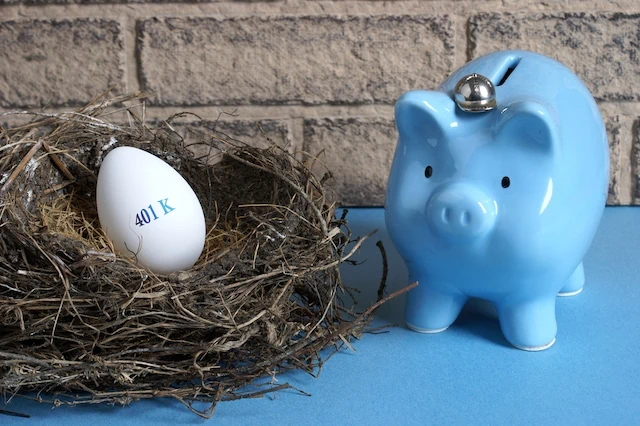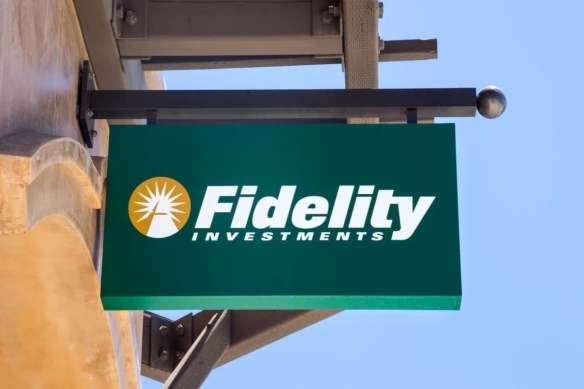When it comes to retirement, Fidelity is a household name. More than 43 million people use Fidelity workplace plan accounts, and many of Fidelity’s 39 million retail accounts are used to save toward retirement.
But many millions more are building up a nest egg with Fidelity in a different way—through Fidelity retirement funds.
Regardless of whether you have a Fidelity 401(k), it’s very possible that you still have access to one or more Fidelity mutual funds in your 401(k). And if so, it’s worth taking a closer look at those offerings—Fidelity boasts a long history of both stellar fund management and creating tactical index products, making them a mainstay for investors preparing for their post-career years.
Today, I’m going to introduce you to some of the best Fidelity retirement funds you can hold within a 401(k) plan. To be clear: Your plan might not hold one, some, or all of these—if they don’t, you can always ask your plan sponsor to include them. You can also consider holding them in other tax-advantaged accounts, such as an IRA or HSA.
Disclaimer: This article does not constitute individualized investment advice. These securities appear for your consideration and not as personalized investment recommendations. Act at your own discretion.
What Should You Want in a Retirement Fund?
When investing your retirement savings, you need to consider a few critical factors.
To start, a robust retirement portfolio should provide diversification across various asset classes. This typically means stocks and bonds, though it can also mean alternative asset classes such as real estate or commodities. Diversifying your retirement portfolio across these asset classes can help defray your risk and smooth your returns.
Costs matter too. Every dollar spent on fees and expenses is a dollar no longer available to grow and compound over time, so keeping expenses cut to the bone is vital. Good news there: The best Fidelity retirement funds will generally have some of the lowest fees and expenses in the business.
And don’t forget taxes. A taxable account (like a standard brokerage account) is better suited to take advantage of certain tax-advantaged investments, such as municipal bonds. For tax-advantaged accounts, such as 401(k)s, some of the best investments include bond funds (where the interest income won’t be taxed) and actively managed stock funds (where the capital gains distributions from heavy trading won’t be taxed).
Finally, you ideally want your retirement portfolio to produce regular dividend income. Stocks can regularly experience nasty corrections and bear markets, but a good income fund can provide for your living expenses without forcing you to sell at an inopportune time.
What Types of Funds Are Available in 401(k) Plans?

Virtually every 401(k) plan is limited to mutual funds. While a handful of plans might offer exchange-traded funds, they’re typically limited to mutual funds—and a handful, at that. Rather than a self-directed account, where you have your pick of virtually the entire mutual fund universe, 401(k)s only let you invest in, say, 10, 15, or 20 mutual funds, each of which cover a specific investing style.
While ETFs typically offer lower costs, mutual funds have certain qualities more befitting a 401(k).
For one, mutual funds don’t trade all day on an exchange, which discourages long-term investors from panic-selling during a particularly bad day in the market. They also allow for fractional share ownership, which is important given that 401(k) plan investors are typically allocating a fixed amount of money to their account every paycheck.
What Is a Mutual Fund?

A mutual fund is an investment company that pools money from many investors to buy stocks, bonds or other securities. The investors get the benefits of professional management and certain economies of scale. A pool of potentially millions or even billions of dollars is large enough to diversify and might have access to investments that would be impractical for an individual investor to own.
Here’s an example: An investor wanting to mimic the S&P 500 Index (an index made up of 500 large, U.S.-listed companies) would generally have a hard time buying and managing a portfolio of 500 individual stocks, especially in the exact proportions of the S&P 500 Index. Another example: An investor wanting a diversified bond portfolio might have a hard time building one when individual bond issues can have minimum purchase sizes of thousands (or tens of thousands!) of dollars.
Equity funds or bond funds will generally be a far more practical solution.
To invest in a mutual fund, you’ll need to open an account with the fund sponsor or open a brokerage account with a broker that has a selling agreement in place with the fund sponsor. As a general rule, most large, popular mutual funds will be available at most brokers, so if you open a traditional investment account (like an IRA or brokerage), you’ll have access to most of the mutual funds you’d ever want to invest in.
Why Fidelity?
Fidelity is a leader in mutual funds (and exchange-traded funds [ETFs], for that matter) and has been a force in the industry since the launch of its Fidelity Puritan Fund (FPURX) back in 1947.
Today, this premier fund company has more than $12.4 trillion in assets under administration thanks to many successes over the intervening years. That includes star money managers such as Peter Lynch, the long-time manager of the Fidelity Magellan Fund (FMAGX) who averaged an incredible 29.2% per year between 1977 and 1990.
However, while Fidelity first built its name on actively managed funds, over the past three decades, the firm has built out its low-cost and even no-cost index funds as part of the movement to reduce expense ratios and transaction costs for individual investors.
The end result is a fund lineup that can serve just about every need, and that’s typically competitive on price.
Make sure you sign up for The Weekend Tea, WealthUp’s free weekly newsletter that over 10k monthly readers use to level up their money know-how.
Related: The 9 Best Fidelity Index Funds to Buy
The Best Fidelity Retirement Funds for a 401(k) in 2024
With all that out of the way, let’s dig into some of the best Fidelity retirement funds to hold in a 401(k) that you might want to dive into this year.
1. Fidelity Sustainable Low Duration Bond Fund

- Style: U.S. ultra short-term bond
- Assets under management: $28.5 million
- Expense ratio: 0.25%, or $2.50 per year for every $1,000 invested
- SEC yield: 5.0%*
Bonds should be a core holding of just about any portfolio. They also happen to be one of the most tax-inefficient asset classes on earth because the bulk of their returns will generally come from interest paid, and interest income is taxed as ordinary income. If you’re in the 37% tax bracket, then you’re losing 37% of your bond interest to taxes.
For this reason, it will virtually always make sense to hold bond funds in a 401(k), IRA, HSA, or other tax-deferred account.
With the yield curve inverted as it is today, meaning that short-term rates are higher than long-term rates, it makes sense to keep a good chunk of your overall bond exposure in short-term bond funds. And one strong contender here is the Fidelity Sustainable Low Duration Bond Fund (FAPGX).
Apart from its attractive ~5.0% yield, FAPGX is a fund you can feel good owning. It will normally invest at least 80% of its assets in investment-grade debt securities that Fidelity believes have positive environmental, social, and governance (ESG) benefits. Roughly 60% of the fund is invested in corporate debt; another 30% is invested in U.S. Treasury securities, and most of the rest is invested in asset-backed securities (ABSes).
One of the most critical metrics to consider when considering bond funds is duration, which is a measure of interest-rate sensitivity. As an example, a bond with a duration of two would see its price rise by 2% if interest rates fell by 1% (or conversely, would see its price fall by 2% if interest rates rose by 1%). The actual calculation of duration is fairly complex; it’s the weighted average of the bond’s cash flows. But the key takeaway is that, all else equal, the longer a bond’s time to maturity, the higher its duration—and thus the higher the interest-rate risk.
FAPGX has a duration of just 0.56 years, which means it is all but immune to the effects of interest-rate fluctuations.
* SEC yield reflects the interest earned across the most recent 30-day period. This is a standard measure for funds holding bonds and preferred stocks.
Want to learn more about FAPGX? Check out the Fidelity provider site.
Related: The 10 Best Fidelity Funds to Buy
2. Fidelity Total Bond Fund

- Style: U.S. intermediate bond
- Assets under management: $38.8 billion
- Expense ratio: 0.45%, or $4.50 per year for every $1,000 invested
- SEC yield: 5.0%
For a more diversified option that covers a wider swath of the bond market, consider the Fidelity Total Bond Fund (FTBFX).
Fidelity Total Bond Fund’s management allocates its assets across a wide variety of bonds and other income-producing debt. While it tends to gravitate toward investment-grade debt, the fund is allowed to invest up to 20% of assets in bonds rated below investment-grade, which potentially offer higher returns in exchange for accepting slightly higher risk. (Sub-investment-grade bonds are also referred to as high-yield debt securities or junk bonds.)
Currently, 35% of the portfolio is invested in corporate bonds, while 30% is invested in U.S. government debt. Most of the rest is invested in mortgage bonds or other mortgage-backed securities (MBSes). And right now, 85% of the portfolio is investment-grade, so the fund isn’t even using its full allowable allotment to junk bonds.
FTBFX has a duration of just more than 6 years; thus, the fund has moderately high interest-rate risk. A rise in interest rates of 1% would mean a price decline of about 6%. But remember: This cuts both ways. A fall in interest rates could mean significant capital gains.
Want to learn more about FTBFX? Check out the Fidelity provider site.
Related: The 7 Best Schwab Funds to Buy
Make sure you sign up for The Weekend Tea, WealthUp’s free weekly newsletter that over 10k monthly readers use to level up their money know-how.
3. Fidelity Real Estate Income Fund

- Style: U.S. REIT
- Assets under management: $4.8 billion
- Expense ratio: 0.68%, or $6.80 per year for every $1,000 invested
- SEC yield: 5.6%
Real estate has been a preferred asset class since the dawn of human civilization. And today, real estate investment trusts (REITs) offer the potential for both high yield and respectable capital gains.
REITs enjoy a special tax status that allows them to avoid corporate taxation so long as they distribute at least 90% of their net profits as dividends. Because of this tax incentive, REITs tend to be one of the highest-yielding sectors and a perennial favorite among income investors.
Unfortunately, this also makes REITs very tax-inefficient, as a large percentage of the total return comes from taxable dividends. What’s more, REIT dividends are generally not classified as “qualified dividends.” Qualified dividends are taxed at the long-term capital gains rate (0%, 15% or 20% depending on your tax bracket). Non-qualified dividends are taxed as ordinary income, like bond interest, and can face rates as high as 37%, depending on your bracket. Thus, it makes more sense to hold REITs and REIT funds in a tax-advantaged fund like a 401(k) rather than a taxable brokerage account.
If you’re looking for a good contender, the Fidelity Real Estate Income Fund (FRIFX) is a solid option. The fund holds a collection of common stock of U.S. REITs such as American Tower (AMT), Equity LifeStyle Properties (ELS), and Prologis (PLD); debt securities of real estate entities; and commercial and other mortgage-backed securities.
FRIFX currently yields around 5.5%, making it a very competitive income option—even in a high-yield environment like today.
Want to learn more about FRIFX? Check out the Fidelity provider site.
Related: The 7 Best T. Rowe Price Funds to Buy
4. Fidelity Trend Fund

- Style: U.S. large-cap growth
- Assets under management: $3.5 billion
- Expense ratio: 0.49%, or $4.90 per year for every $1,000 invested
- Dividend yield: 0.0%
An old Wall Street maxim says “you never go broke taking a profit.” There is a lot of wisdom in that quote. As a general rule, buying and holding good stocks or good funds and allowing them to compound over years or even decades is the way to go. But having at least part of your portfolio in actively traded strategies can also make sense, particularly in bear markets. Actively traded strategies have their stretches when they outperform passive index strategies, and they can potentially help you to avoid major declines.
Unfortunately, active trading strategies are also woefully tax-inefficient, particularly if your holding period is less than a year. Short-term capital gains are taxed as ordinary income, meaning you could be sharing up to 37% of your gains with Uncle Sam.
So, it makes sense to hold funds that do a lot of active trading in a tax-deferred retirement account. There is no precise, universally accepted threshold for what constitutes “a lot” of active trading, but I would consider any fund with portfolio turnover (how much of the portfolio’s holdings are turned over, or replaced, in a given year) over 30% or so to be fairly tax-inefficient. The higher that number goes, the more inefficient the fund.
As an example, let’s look at the Fidelity Trend Fund (FTRNX). This is a fairly aggressive fund that focuses on companies the manager believes have above-average growth potential. FTRNX is tech-heavy and has beaten its Morningstar Category average over every meaningful time period.
But this high performance comes at the cost of a lot of active trading; the annual portfolio turnover is about 50%. In a taxable account, that’s a large potential tax liability. Thus, FTRNX is exactly the kind of actively managed fund best held in a tax-advantaged retirement account.
Want to learn more about FTRNX? Check out the Fidelity provider site.
Related: The 10 Best Dividend Stocks to Buy
5. Fidelity 500 Index Fund

- Style: U.S. large-cap blend
- Assets under management: $568.3 billion
- Expense ratio: 0.015%, or 15¢ per year for every $1,000 invested
- Dividend yield: 1.3%
As a long-term wealth builder, it’s really hard to beat the S&P 500. It’s rare to find an actively managed mutual fund that can consistently beat the S&P 500 over time, particularly after considering fees and expenses.
Thing is, turnover in S&P 500 index funds tends to be low at just a couple percent in any given year. That makes them an extraordinarily tax-efficient way to invest, as they generate very little in taxable capital gains—making them a much better fit for a taxable account than a tax-advantaged one. But given that a 401(k) is often an investor’s primary (and sometimes only) investing account, and given that performance is the ultimate goal, stashing an S&P 500 index fund like the Fidelity 500 Index Fund (FXAIX) in your 401(k) is one of the absolute smartest moves you can make.
If you believe in the American growth story, then buying a basket of America’s biggest and most recognized companies makes sense. Even Warren Buffett, the Oracle of Omaha himself—considered by many to be the greatest investor in history—has said on multiple occasions that most investors, most of the time, should simply buy and hold an S&P 500 index fund and let it run.
The Fidelity 500 Index Fund has an almost nonexistent expense ratio of just 0.015%, which is just about impossible to beat. That has helped it draw an incredible $565+ billion in assets under management.
Want to learn more about FXAIX? Check out the Fidelity provider site.
Related: 7 High-Quality, High-Dividend Stocks to Buy
6. Fidelity Target-Date Funds

- Style: Target-date
- Expense ratio: Fidelity Freedom Funds: 0.47%-0.75%, or $4.70-$7.50 per year for every $1,000 invested; Fidelity Freedom Index Funds: 0.12%, or $1.20 per year for every $1,000 invested; Fidelity Freedom Blend Funds: 0.41%-0.49%, or $4.10-$4.90 per year for every $1,000 invested; Fidelity Freedom Sustainable Target Date Funds: 0.41%-0.49%, or $4.10-$4.90 per year for every $1,000 invested
One of the issues in building an appropriate allocation allocation is that your ideal mix of stock and bond funds will evolve over time based on your age and stage of life. An ideal portfolio for a 20-year-old is likely going to be very different from that of a 40-year-old, and both those portfolios will be different from what’s ideal for a 60-year-old.
This is where a target-date fund can really be a lifesaver. A target-date fund—also called a life-cycle fund—is a type of mutual fund that is designed to change its asset allocation over time.
The typical target-date fund is an actively managed fund—one that will start out with a heavy allocation to stocks and then slowly transition to a heavier allocation to bonds as it approaches its target retirement date, following a glide path.
The target retirement date is intended to be a rough estimate and doesn’t need to be precise. You’re generally not going to know the precise year you plan to retire decades in advance. Fidelity, like most mutual fund families, creates its target-date funds in five-year increments of target retirement date (say, 2025, 2030, 2035, etc.).
And given the hyper-specific focus on retirement, target-date funds tend to be a mainstay of 401(k) plans.
Fidelity actually boasts four different lineups of target-date funds:
- Fidelity Freedom Funds: These hold a collection of actively managed Fidelity funds.
- Fidelity Freedom Index Funds: These hold a collection of indexed Fidelity funds.
- Fidelity Freedom Blend Funds: These hold a combination of actively managed and indexed Fidelity funds.
- Fidelity Sustainable Target Date Funds: These hold a combination of actively managed and indexed Fidelity funds that invest in assets with positive environmental, social, and governance characteristics.
They’re cheap, they have no required minimum investment, and they’re among the best suites of life-cycle funds you can buy..
Related: 7 Best High-Dividend ETFs for Income-Hungry Investors
How Does Your Portfolio Look? Ask Empower

More than 3 million users are putting their retirement on track by putting Empower’s tools and/or advisory services to work for them.
Wondering how your portfolio is shaping up? Sign up with Empower to use its free Investment Checkup tool, which can help you assess your portfolio risk, analyze past performance, and get a target allocation for your portfolio. You can even compare your portfolio to both the S&P 500 and Empower’s “Smart Weighting” Recommendation.
And if you want a fuller advisory experience? Empower’s full-service Wealth Management account pairs the firm’s tools with skilled human management. Empower will create a recommended portfolio spanning six asset classes, then help you implement your plans by giving you access to financial advisors who can guide you through retirement planning, college savings, workplace stock options, and more.
Regardless of how much money you bring to the table, if you sign up, you will be given the option to schedule an initial 30-minute financial consultation with an Empower advisor.
- Empower offers both a free set of portfolio, net worth, and cash flow tracking tools, as well as paid asset management service.
- Link Empower to your bank and investing accounts, credit cards, and more to see a single view of useful information and data, including your net worth.
- Empower Advisory Group offers a comprehensive wealth management service known as Personal Strategy. This managed account solution provides clients with discretionary investment management, personalized portfolio construction, and access to financial planning support. Accounts investing $100k to $250k receive unlimited advice and retirement planning help from financial advisors, as well as a professionally managed ETF portfolio with reviews upon request. Higher asset tiers offer access to dedicated advisors, estate planning, and tax specialists, plus additional investment options like access to private equity.**
- Special offer: If you have $100k+ in investible assets, sign up with our link to schedule a free initial 30-minute financial consultation with an Empower professional.
- Free portfolio tracker (Dashboard)
- Free net worth, cash flow, and investment reporting tools (Dashboard)
- Tax-loss harvesting (Personal Strategy)
- Dividend reinvestment (Personal Strategy)
- Automatic rebalancing (Personal Strategy)
- Low investment expense ratios (Personal Strategy)
- High number of investment accounts supported (Personal Strategy)
- High $100k minimum for investment management (Personal Strategy)
- Moderately high investment management fee (0.89% AUM) compared to other online advisors (Personal Strategy)
Related: Best Fidelity Retirement Funds to Hold in an IRA
Fidelity Retirement Funds for 401(k)s: Frequently Asked Questions (FAQs)

What is the minimum investment amount on Fidelity mutual funds?
Fidelity’s mutual funds (and ETFs, for that matter) make plenty of sense for investors of all shapes and sizes, but they have a particular appeal among people who don’t have much money to work with. That’s because many Fidelity mutual funds have no investment minimums—you can literally start with as little as $1.
OK, that doesn’t matter much in a 401(k). When you invest in a 401(k), you set percentage allocations to each fund, and the amount you contribute to each paycheck is appropriately parceled out. In other words, there really are no investment minimums within a 401(k). Still, Fidelity’s glut of zero-minimum funds comes in very handy if you’re investing in a self-directed account, be it an IRA, HSA, taxable brokerage, etc.
What are index funds?
There are two kinds of funds: actively managed funds and index funds.
With an actively managed fund, one or more managers are in charge of selecting all of the fund’s holdings. They’ll likely have a specific strategy to adhere to, and they’ll be tasked with beating a benchmark index, but they’ll be given a lot of discretion about how to achieve that. These managers will identify opportunities, conduct research, and ultimately buy and sell a fund’s stocks, bonds, commodities, and so on.
An index fund, on the other hand, is effectively run by algorithm. The fund will attempt to track an index, which is just a group of assets that are selected by a series of rules. The S&P 500 and Dow Jones Industrial Average? Those are indexes with their own selection rules. Index funds that track these indexes will generally hold the same stocks, in the same proportions, giving you equal exposure and performance (minus fees) to those indexes.
If you guessed that it’s more expensive to pay a conference room full of fund managers than it is a computer that tracks an index, you’d be right. That’s why actively managed funds tend to cost much more in fees than index funds.
And that’s why ETFs are generally cheaper. Most (but not all) mutual funds are actively managed, while most (but not all) ETFs are index funds.
Why does a fund’s expense ratio matter so much?
Every dollar you pay in expenses is a dollar that comes directly out of your returns. So, it is absolutely in your best interests to keep your expense ratios to an absolute minimum.
The expense ratio is the percentage of your investment lost each year to management fees, trading expenses and other fund expenses. Because index funds are passively managed and don’t have large staffs of portfolio managers and analysts to pay, they tend to have some of the lowest expense ratios of all mutual funds.
This matters because every dollar not lost to expenses is a dollar that is available to grow and compound. And over an investing lifetime, even a half a percent can have a huge impact. If you invest just $1,000 in a fund generating 5% per year after fees, over a 30-year horizon, it will grow to $4,116. However, if you invested $1,000 in the same fund, but it had an additional 50 basis points in fees (so it only generated 4.5% per year in returns), it would grow to only $3,584 over the same period.









